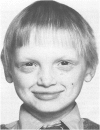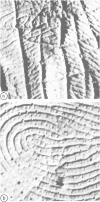Abstract
Boys with X-linked hypohidrotic ectodermal dysplasia and their families were studied. Many suffered severe illness in early childhood and nearly 30% died; many had feeding problems, severe fever, atopic disease, and recurrent respiratory infections. Some infants failed to thrive. We found no consistent common endocrine or immunological abnormality, although, most had abnormal immunoglobulin production. This may be related to the abnormal mucosa of the gastrointestinal and respiratory tracts which exacerbates the chronic obstructive airways disease found later in life in those who smoke. Mental handicap was not a feature, although convulsions sometimes occurred during fever. Early diagnosis is important to avoid attacks of severe fever and so that rational management may be planned for other problems that arise. Dental advice should be sought before school age and genetic counselling may also be required. Many female carriers may be recognised at clinical examination: their affected sons can then be diagnosed more readily.
Full text
PDF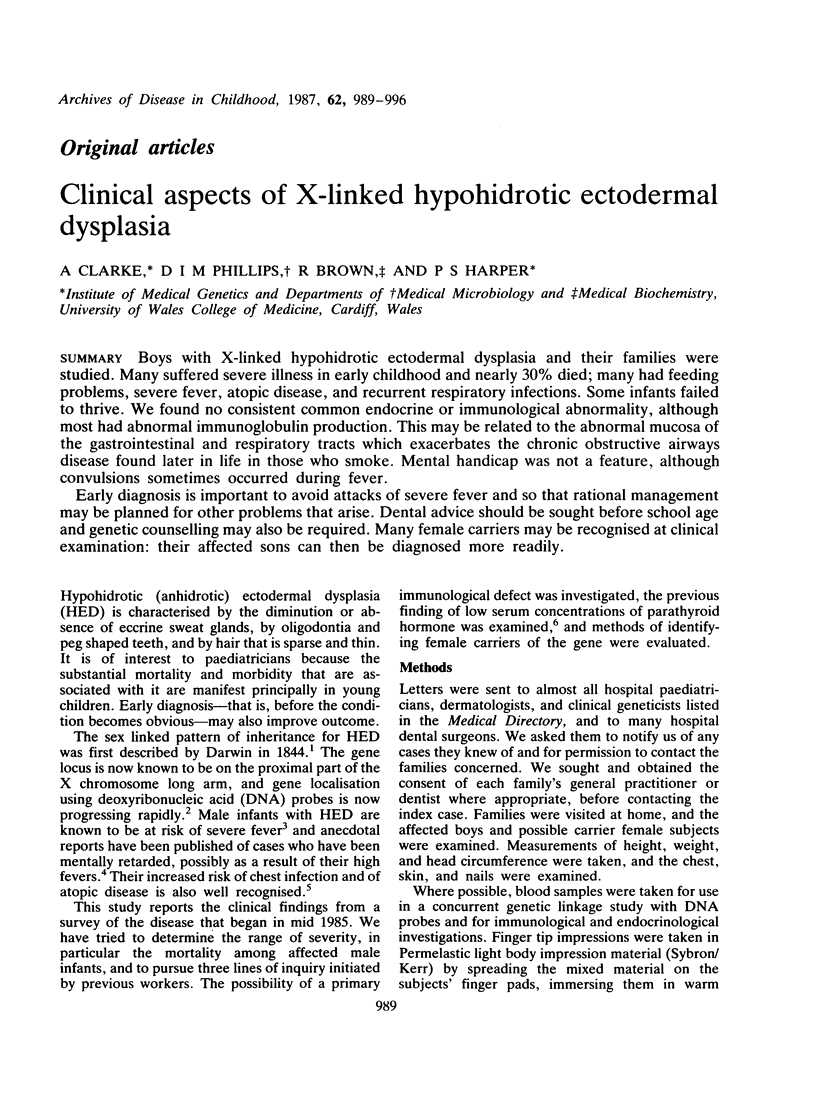
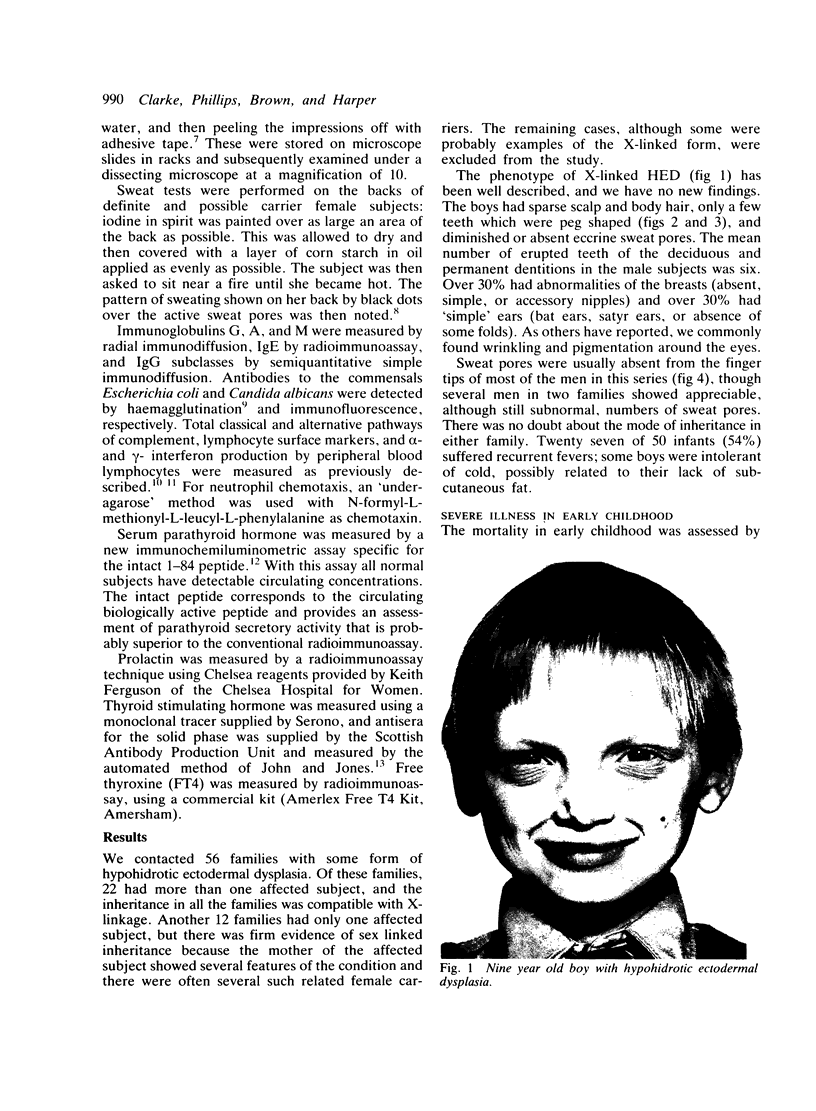
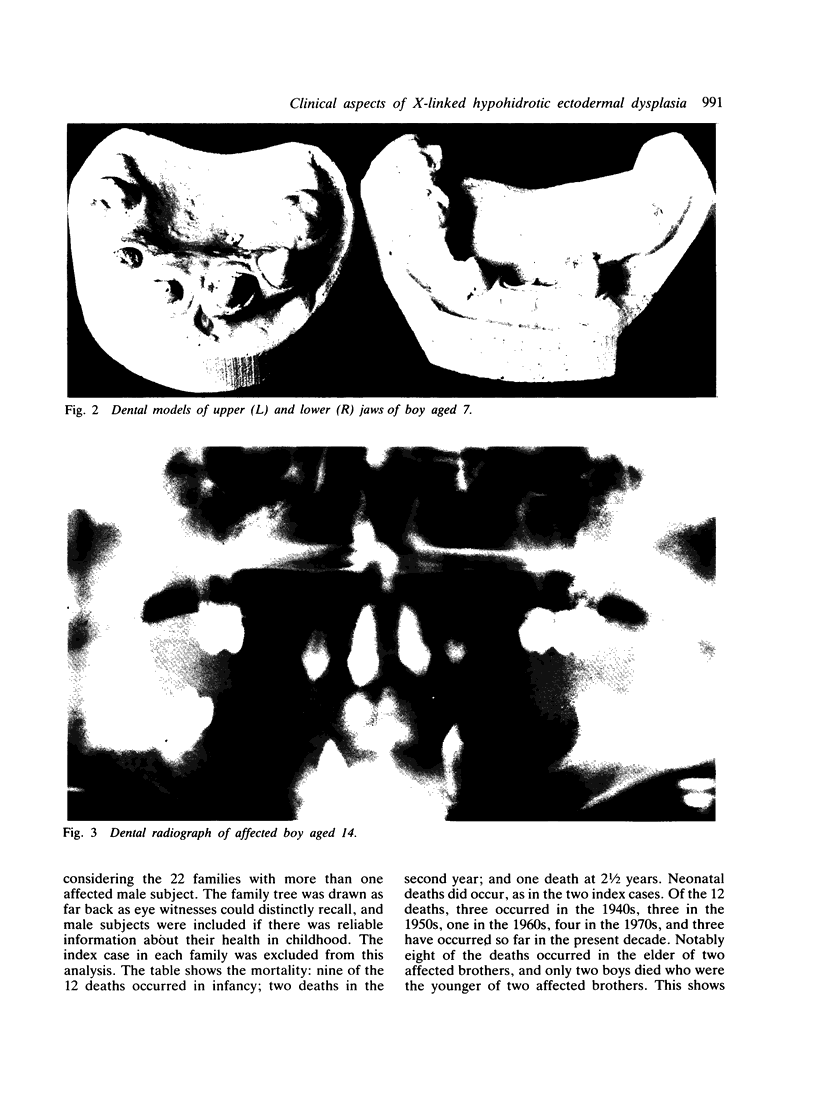
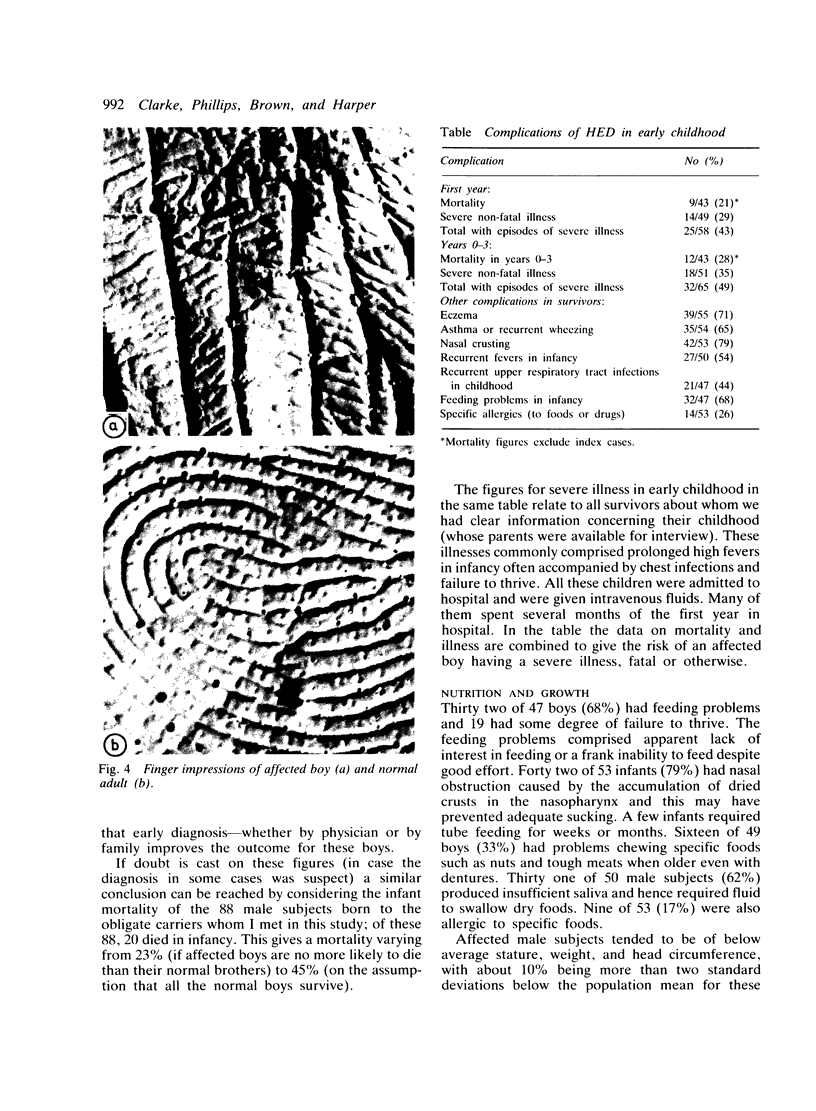
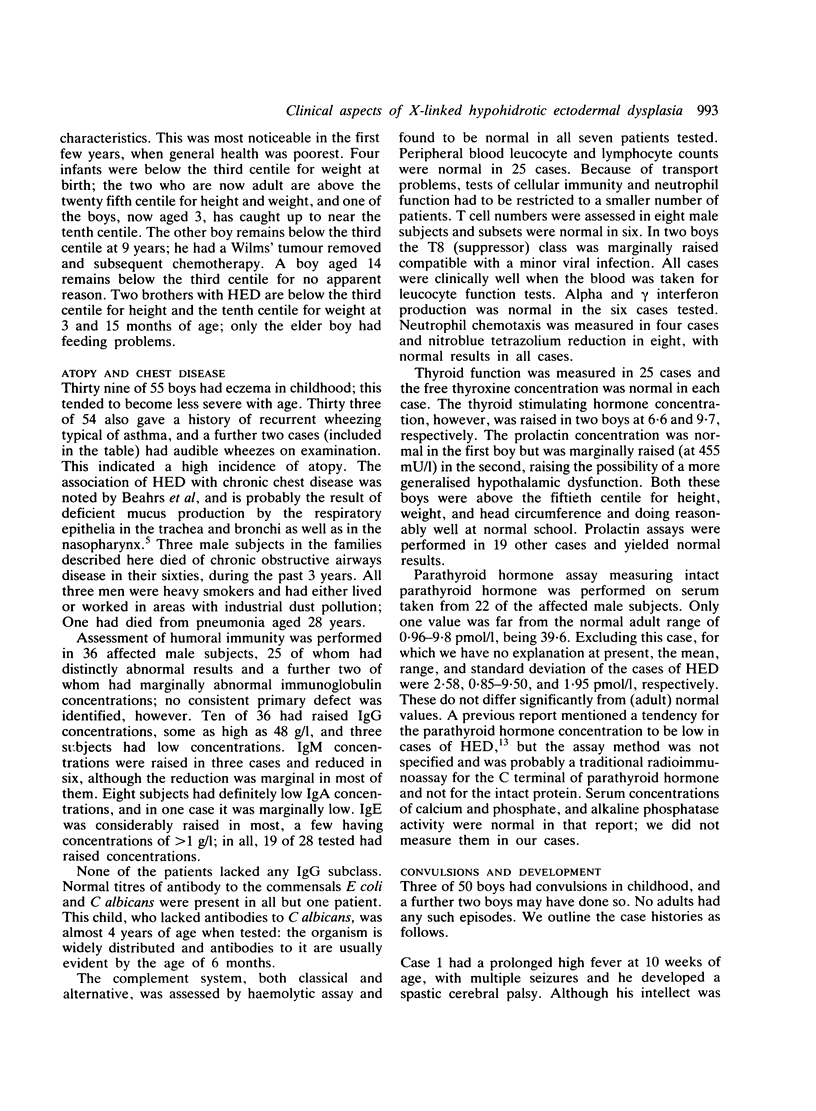
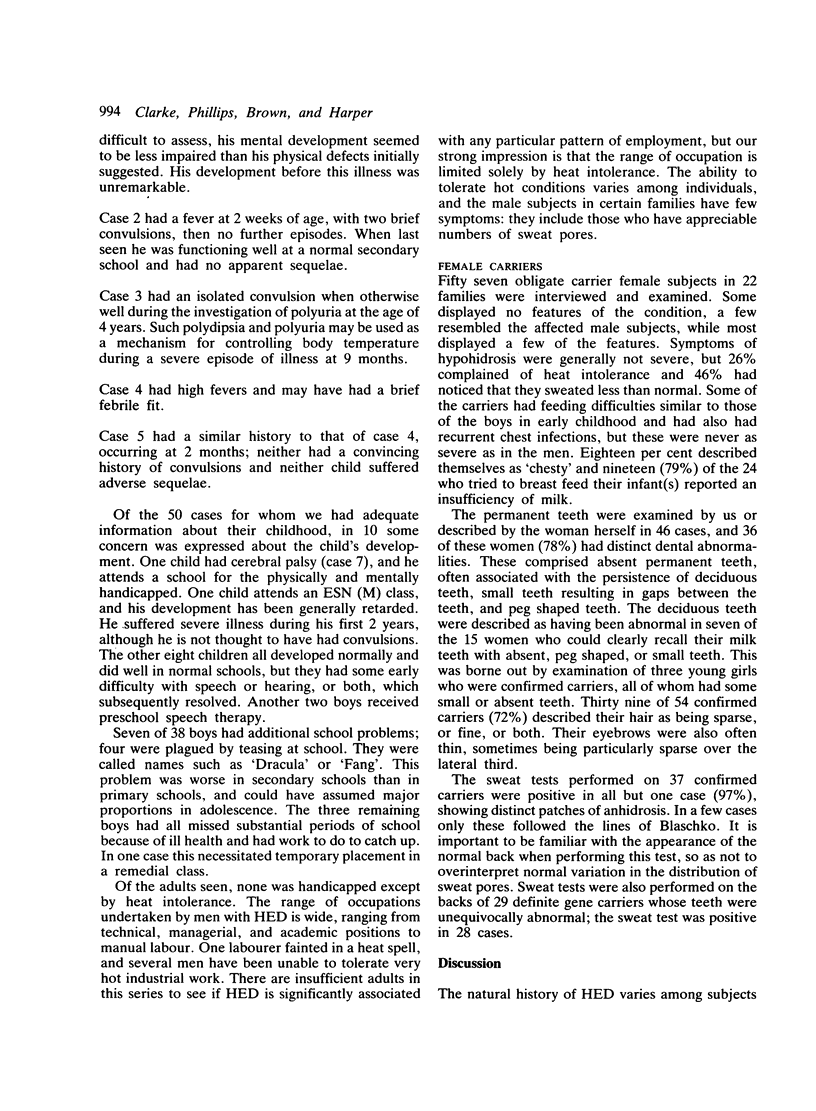
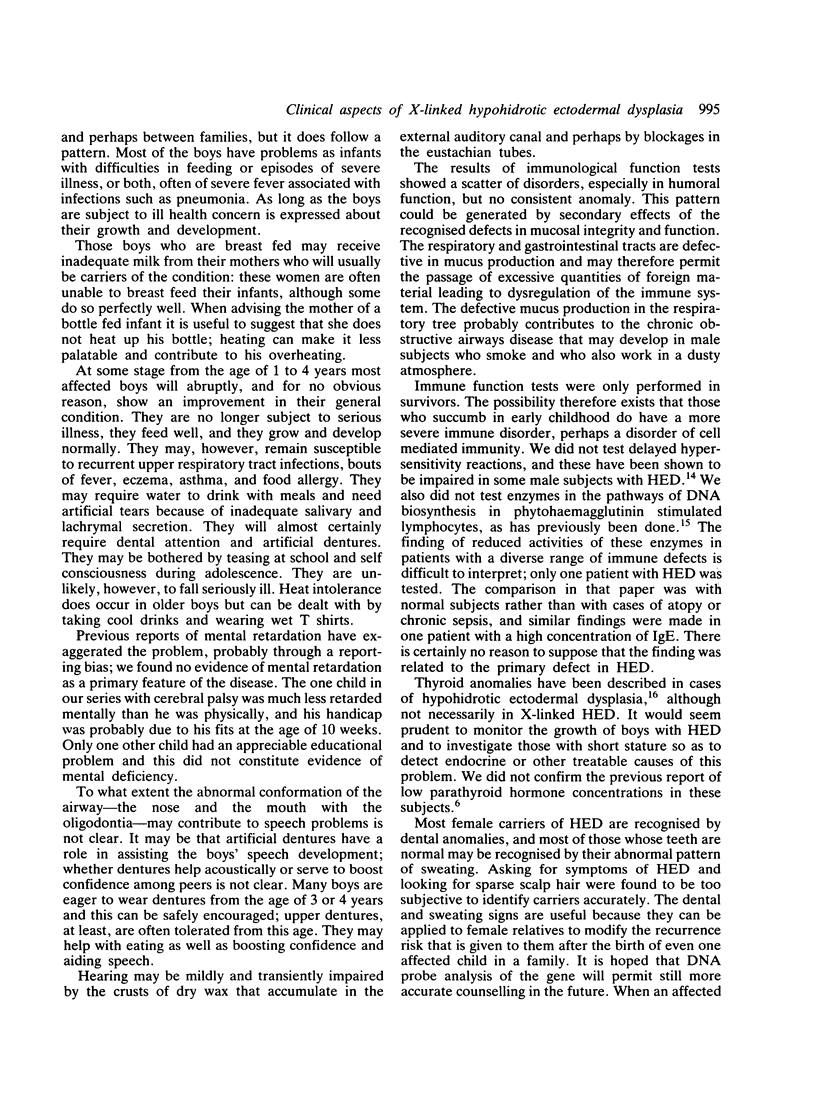
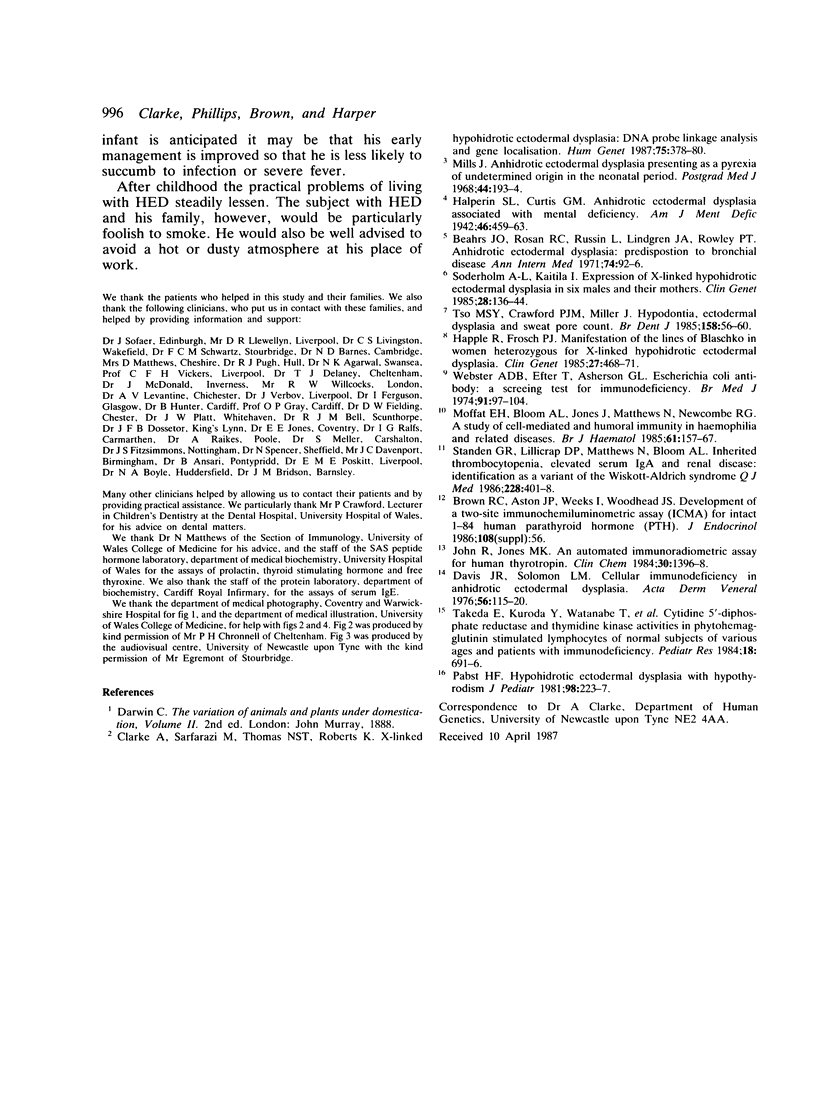
Images in this article
Selected References
These references are in PubMed. This may not be the complete list of references from this article.
- Clarke A., Sarfarazi M., Thomas N. S., Roberts K., Harper P. S. X-linked hypohidrotic ectodermal dysplasia: DNA probe linkage analysis and gene localization. Hum Genet. 1987 Apr;75(4):378–380. doi: 10.1007/BF00284112. [DOI] [PubMed] [Google Scholar]
- Davis J. R., Solomon L. M. Cellular immunodeficiency in anhidrotic ectodermal dysplasia. Acta Derm Venereol. 1976;56(2):115–120. [PubMed] [Google Scholar]
- Happle R., Frosch P. J. Manifestation of the lines of Blaschko in women heterozygous for X-linked hypohidrotic ectodermal dysplasia. Clin Genet. 1985 May;27(5):468–471. doi: 10.1111/j.1399-0004.1985.tb00233.x. [DOI] [PubMed] [Google Scholar]
- John R., Jones M. K. An automated immunoradiometric assay for human thyrotropin. Clin Chem. 1984 Aug;30(8):1396–1398. [PubMed] [Google Scholar]
- Mills J. Anhidrotic ectodermal dysplasia presenting as a pyrexia of undertermined origin in the neonatal period. Postgrad Med J. 1968 Feb;44(508):193–194. doi: 10.1136/pgmj.44.508.193. [DOI] [PMC free article] [PubMed] [Google Scholar]
- Moffat E. H., Bloom A. L., Jones J., Matthews N., Newcombe R. G. A study of cell mediated and humoral immunity in haemophilia and related disorders. Br J Haematol. 1985 Sep;61(1):157–167. doi: 10.1111/j.1365-2141.1985.tb04072.x. [DOI] [PubMed] [Google Scholar]
- Pabst H. F., Groth O., McCoy E. E. Hypohidrotic ectodermal dysplasia with hypothyroidism. J Pediatr. 1981 Feb;98(2):223–227. doi: 10.1016/s0022-3476(81)80639-7. [DOI] [PubMed] [Google Scholar]
- Standen G. R., Lillicrap D. P., Matthews N., Bloom A. L. Inherited thrombocytopenia, elevated serum IgA and renal disease: identification as a variant of the Wiskott-Aldrich syndrome. Q J Med. 1986 Apr;59(228):401–408. [PubMed] [Google Scholar]
- Söderholm A. L., Kaitila I. Expression of X-linked hypohidrotic ectodermal dysplasia in six males and in their mothers. Clin Genet. 1985 Aug;28(2):136–144. doi: 10.1111/j.1399-0004.1985.tb00373.x. [DOI] [PubMed] [Google Scholar]
- Takeda E., Kuroda Y., Watanabe T., Ito M., Naito E., Sekiguchi T., Ichioka T., Hosoda T., Miyao M. Cytidine 5'-diphosphate reductase and thymidine kinase activities in phytohemagglutinin-stimulated lymphocytes of normal subjects of various ages and patients with immunodeficiency. Pediatr Res. 1984 Aug;18(8):691–696. doi: 10.1203/00006450-198408000-00002. [DOI] [PubMed] [Google Scholar]
- Tso M. S., Crawford P. J., Miller J. Hypodontia, ectodermal dysplasia and sweat pore count. Br Dent J. 1985 Jan 19;158(2):56–60. doi: 10.1038/sj.bdj.4805534. [DOI] [PubMed] [Google Scholar]



